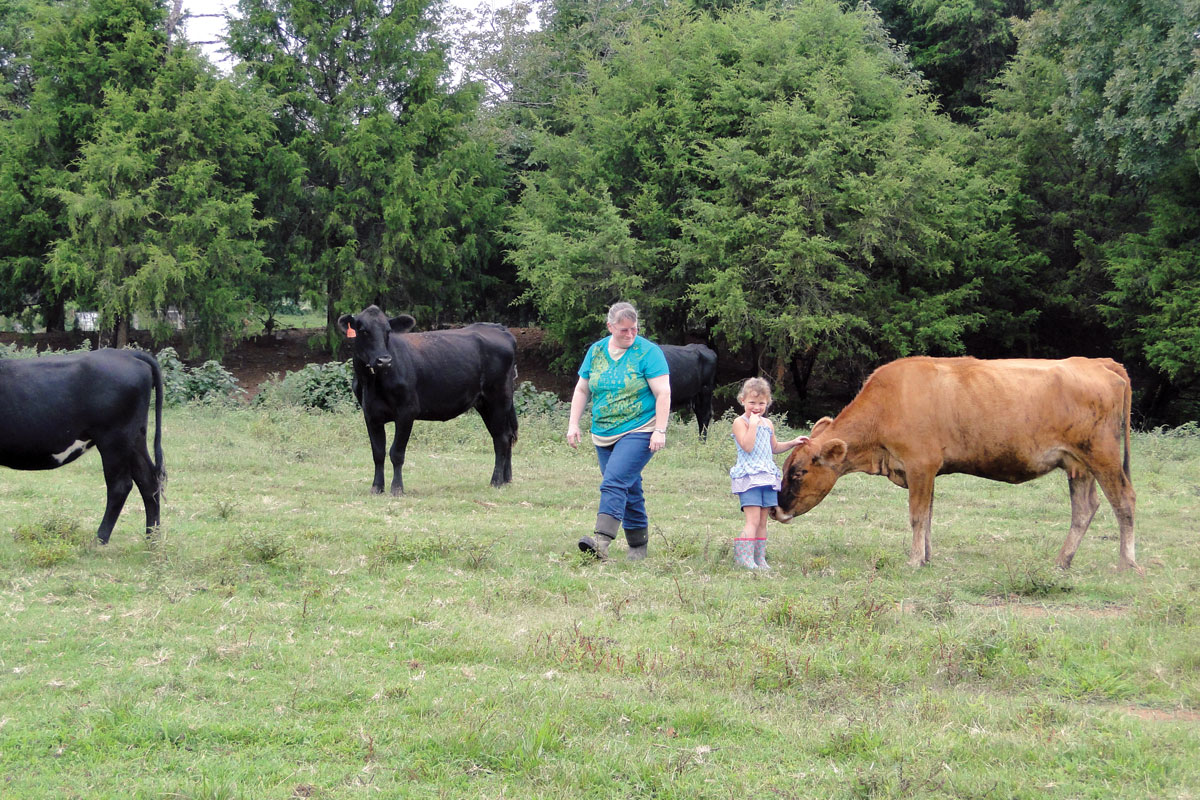
Ron and Sandra Genz both have off-the-farm jobs, but they find time to care for their cattle and farmland
Ron and Sandra Genz typify many part-time farmers with off the farm jobs. Days are long and nights are short as they balance employment and farming.
The Genz’s own and lease 150 acres in West Fork, Ark., with 35 acres being part of acreage originally purchased by Ron’s parents Iris and Clarence Genz. The Genz family moved from Ault, Colo., with Ron arriving in 1979 two weeks after graduating from high school. Sandra, on the other hand, was a Woodstock, Ill., native who arrived in 1978.
The couple met in 2000 while working for Superior Industries International where Ron is a maintenance technician and Sandra a lab technician in quality control. The couple met in March and married in August. The couple has three children: son Brad and daughters Maryann and Katelyn. These children have blessed the couple with six grandchildren.
Five-year-old Aubree frequently comes from Oklahoma to visit her grandparents for a weekend and, like all their grandchildren, has her own heifer which in her case is an Angus/Charolais cross named Rapunzel who really stands out in Ron’s black and Red Angus commercial herd.
“Aubrey thought she was pretty, and I couldn’t say no,” Ron said with a smile.
The Genz operation consists raising commercial cattle and custom baling. Currently the couple has 65 mommas, including 40 bred heifers purchased last year for fall calving and two black purebred Angus bulls. The purchase of the heifers has resulted in a larger fall calving season and a much smaller spring calving season. Ron plans to divide the herd by calving season shortly. “Sixty-five mommas are too many for one bull,” Ron said.
The larger and older bull is 1,700 pounds but consistently produces 70 pound calves which are weaned at nine months weighing 600 pounds. The younger bull is now just reaching breeding age and will stay with the smaller and older group.
Because the couple are employed off the ranch, many of their practices are simplified. Mommas are given 90 days rest before, as Ron says, “going back to work.”
Cows and bulls receive only enough cubes to keep them interested, while calves are given a 14 percent free choice creep feed. Health protocols include vaccinating and using both pour on and paste wormer in the spring but only paste in the fall. The biggest health concern is pinkeye with a pour on and paste combination doing a good job of handling the issue.
“Our vet, Dr. (Tim) O’Neil in Farmington, Ark., has always given us good advice so we do what he recommends,” Ron said.
Land care and brush hogging are an equally important aspect of the Genz farm. The land contains a well and two ponds with one that is spring fed. It also has a wet weather creek.
“I would like to divide my pastures for a better rotation program but I need to develop more water sources first, something in my plans though I am not there yet,” Ron explained.
Ron uses an unusual fertilizer: fully treated and composted waste from Fayetteville Sanitation.
“The material is very cheap and works extremely well when combined with soil testing, followed by supplementation with the nutrients that testing identifies,” Ron said.
Weed control is equally important. Ron broadcast sprays in the spring and spot sprays mostly for windborne thistles. Honey locust is cut out and burned while brush hogging is used in outlying areas.
Pasture is comprised of Bermuda, fescue, Orchardgrass and clover. Ron over seeds with Orchard grass and clover as needed to keep variety in the cattle’s diet and to provide good forage, especially since his large pastures mean little herd movement among pastures.
Baling is a significant portion of farm income. Through the years Ron realized he needed a more efficient system, especially if that system could be worked by one person. Sandra was often busy with the cows, the house and family, which meant she was not always available when needed. Ron found a solution with a new piece of equipment called a Flexrake which he purchased last spring in Alabama. It can be attached to any tractor capable of harvesting hay. Using a hydraulic system to place cut hay in winrows, the equipment then rolls, wraps and releases the completed bale.
“This equipment works well. For example I started out at 9:30 in the morning at a custom baling site and finished at 5:30 with the production of 280 wrapped bales,” Ron said “And, I did it by myself.”
Ron credits his father with an old tip for deciding if the hay is dry enough to bale. Clarence told Ron to grab a quarter-sized bunch of hay at each end and pull hard to see if the bunch breaks. The process is to be repeated three times, and, according to Clarence, if it breaks all three times, the hay is ready to bale.
Ron and Sandra both feel they have too many irons in the fire and that time is the enemy. Ron said, “I want to retire from my town job in six years so I can play with my cows.”
“Sitting on a 5-gallon bucket and watching the cows is one of my favorite things to do though watching Aubrey feed calves is pretty high up there too,” Sandra added.






